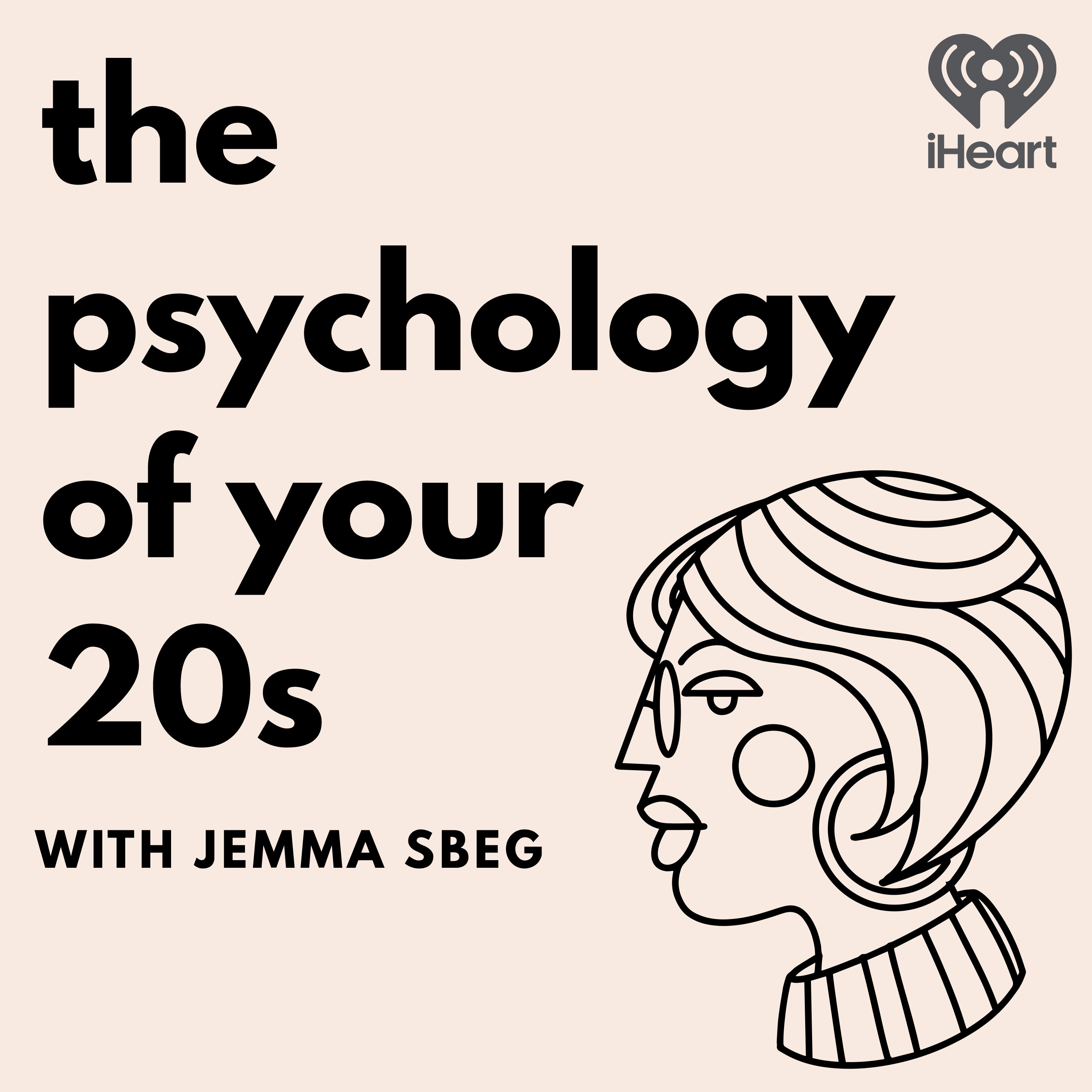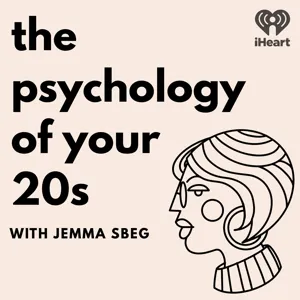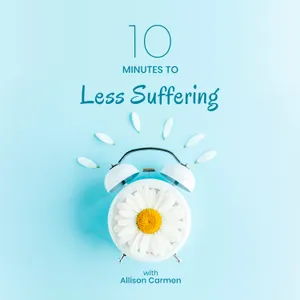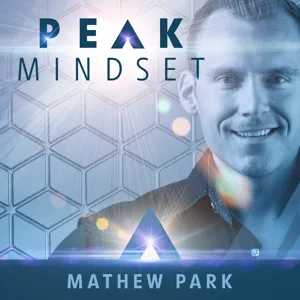Summary
In today’s episode, with the help of Sarah McLean, the owner of the McLean Meditation Institute, my personal teacher, and a woman with an unusual and exciting background, we will demystify meditation. There are so many brands and types of meditation out there; it can be downright confusing. The important thing is to understand a bit, not make it too hard, and, most importantly, do not delay your practice! Without practice, you are missing all the amazing benefits of meditation.
Sarah’s joining us from Santa Barbara, California, and will tell you her journey to demystify meditation. She will tell you tales of her time in the Army, in an ashram in India, and travels on a nine-month mountain bike trek through faraway lands. She will touch on many experiences from Transcendental Meditation, working with Deepak Chopra to ah-ha moments on a rooftop in Georgetown, DC. She did all the work, and we all benefit from her discoveries.
On last week’s show, we talked about three things to make your meditation a slam dunk: desire, focus, and a nonjudgmental attitude (which I learned long ago from Sarah herself.) This episode is perfect timing because Sarah will take those three things and go deeper as she unravels the mysteries of meditation.
My suggestion is to listen intently but listen gently, like the awareness of breath in meditation. You know you are breathing but get lost in the beauty of its simplicity. Do not control or change; just follow and enjoy.
~~~~~~~~~~~~~~~~~~~~~
Podcast
Hey there, Alexa Z here! I am so excited and a little nervous because I have Sarah McLean, my meditation teacher, on the line. She is kind enough to take time out of her busy schedule to help me, help you demystify meditation, specifically the different types/brands of meditation.
I found Sarah after many years of meditating. I started meditating when I was 17 years old because I had terrible panic attacks. Meditation was a pill for me. I wish I could go back and start again; I would because now I know all the opportunities meditation has provided me, and I would have had a more consistent practice from the start.
Alexa: I want to welcome Sarah! Again, I am a little nervous and excited. This will be a fun back and forth conversation. I am also a bit jealous because I know you are in Santa Barbara, California, and the weather is a lot nicer than the rain, drizzle, and cold here in Annapolis, Maryland.
Sarah: Well, it is a bit like heaven on earth, sorry to make you jealous. Maybe we can practice Mudita, which is sympathetic joy, I hope you can feel happy for me, that I get to live in Santa Barbara after trying to convince my husband to move here for 17 years. It's great to be here, and Maryland is not too shabby.
Alexa: No, it isn't, and knowing that I can visit and take more classes at your new meditation center with you in Santa Barbara, makes me super happy. So let's, get right into it. Let's demystify meditation. The reason why this came to mind is that my students, clients, and even strangers come to me and say they have been studying meditation but have not started their practice. Typically, they say they are waiting for a particular time in there life to begin meditating or that they need to continue to learn about meditation before starting a practice. Sarah, what do you think about all of this. Why is it so confusing?
Sarah: There are so many different types, categories of meditation
- Uses
- Formal and informal
- Religious, historical origin
- Different names in other languages
- Brand new/Brand names
I'll share a little bit about my story and how I got into meditation. More importantly, how I realized I did not know anything about meditation.
Alexa: Oh, that's perfect!
Sarah: When I was younger, I was in the military. I wanted to be a spy, but that didn't work out. I wanted to understand the mysteries of life. I did not become a spy; instead, I became a behavioral specialist; that's when I started to learn the mysteries of the mind. I worked with Soldiers who suffered from Post-Traumatic Stress Disorders (PTSD). Back then, we used medication versus meditation. Luckily for me, I was introduced to a body awareness practice. I was sitting outside of a psychiatric hospital, where, unfortunately, that's where many Soldiers who were really suffering would end up. Our whole platoon was sitting out on the lawn when one of the male nurses introduced me to a body scan. He had us all laydown, and he guided us from our head to our toes, allowing us to relax. It was only about 10 minutes. In the end, I realized that I worked with very stressed Soldiers, and I didn't even realize the amount of stress I was carrying. That moment planted a seed in me. After I got out of the Army, I looked into contemplative practices. I spent a lot of time exploring world traditions, looking for the secrets of life. I was on my mountain bike for about nine months and bicycled half-way around the world. I kept looking for the answers. I found it when I was sitting in my room in Georgetown, Washington, D.C. I was on the top of a three-story of a brownstone, learning to meditate using a silent mantra practice, through Transcendental Meditation (TM). Again, there was a contrast on how I felt before I learned, and after I silently repeated a mantra that I had no idea what it meant. It was another "ah-ha" moment.
A few months after that, I moved to a TM community. I answered the phones and discussed mind, body, health. I was working with Deepak Chopra, who, at the time, no one was familiar with. People were looking for alternative practices and alternative healing. Many people would seek our help because of health reasons such as chemotherapy didn't work, diagnosed with Parkinson's, or depressed. I would ask all who called, "do you meditate?" They would answer with, yes, while I am watching TV, driving to work, or in the shower. I would have to convince them all to learn to meditate because meditation was required to be in the TM community. In 1990, meditation was not a "buzz word." No one talked about mindfulness. People would come to the community, and I would teach them about meditation. Unfortunately, at the time, I thought there was only one way to meditate. Though I had that great experience with the body scan, I was still "drinking the kool-aid" on the brand name of TM. So even when someone told me they were Upasana, insight, or mindfulness, or a different type of meditation, I wouldn't give it much credit.
Alexa: I have known you for a long time, and I have heard all your stories, but it is so fun to listen to it in order; it's starting to make so much sense to me. I have a lot of military people in this town, and a lot of military people listen to my podcast. I want everyone to take note that Sarah started her journey with meditation in the Army. How long ago was that?
Sarah: It was 1980/1981. It was only done by a rouge male nurse, who felt the need to take us aside and try the body awareness practice. Meditation was not mandated to be a part of our training.
Alexa: It still isn't mandated, but it is interesting that you initially thought you would become a spy, you ended up learning about body scans. A lot of meditators feel that we can't be a meditator unless I do what Sarah does, go all those places, learn all those things. You taught me through your experiences that I can learn, and I don't have to live in an ashram for years. I am really grateful for that!
Sarah: You are welcome!
Alexa: Thank you for doing all the learning for all of us.
Sarah: I wasn't the mainstream kind of gal, I didn't want just to get married and have kids, get a job, and retire. My motivation in life was, can I find out the mysteries of this existence? What is it that animates all of creation? I know I am a little weird, but that was what was right for me.
I have to fast-forward after working and being in the TM organization for years. I won't go into the whole story, as you can google it. Deepak Chopra and I got kicked out of TM. Getting kicked out of an organization tells me one thing, that is that it is exclusive, not inclusive. How can you get kicked out of a meditation organization?! Well, some ways are to change your guru, changing your job, or changes that some tell you not to, but you do it anyway. I am in good company, so is Deepak Chopra. There is also Ravi Shankar, who does the Art of Living program. Many have been "kicked out" of TM. That was a warning for me, how can TM be a great organization? TM practice is a great practice.
After I left the TM organization, I went to California with Deepak in 1992/1993. We opened up a health center. He came up with his practice, which was also a silent practice that is not TM. Deepak's practice is called Primordial Sound Meditation. I started to learn that there are a variety of practices available and they all work. You can stare at the sky, a fire, etc. to use as your object of meditation.
There are so many types of meditation.
-
- paying attention to your breath
- counting your breath
- asking yourself questions that stopped the mind
- walking meditation
- imagination meditation
Scientists are researching meditation. I have been a research subject in a few studies. Scientists have a hard time differentiating the different types of meditation. Here are a few ways that I categorize mediation:
- Focus awareness/concentration meditation
- Open awareness meditation- Advanced practices
- Guided meditation
- Imagery meditation
When I was in India, I learned more about meditation.
- Guru
- Eat, pray, love
- Chanting
- Devotion
After India, I moved into a Zen Buddist Monastery. I wanted to give up the whole notion of devotion and move into emptiness.
I want to share the basics of meditation. You went into meditation because you wanted to get rid of your anxiety. I went into meditation because I had a very stressful childhood, and I also suffered from panic attacks. I wanted to feel that life mattered, I mattered, and a deep sense of love.
There are three basic ingredients to any type of meditation.
[Sarah discusses in detail the below]
- Your intention
- Attention
- What you are paying attention to:
-
- something you see
-
- something you sense
-
- feeling/emotion
- moving
- stillness
Alexa: My listeners might still be a little unsure of where to start. When you talked about focused awareness and open awareness; I compare it to a camera, am I zooming in or am taking a wide-angled, panorama picture. I want to go back to the three things that you taught me, going back to desire, non-judgemental attitude, and focus. Sarah, I started feeling over-whelmed when I didn't have a focus. When I read your book, Soul-centered: Transform your life in 8 weeks with meditation, before knowing you, you helped me simplify meditation. Thank God, science now says we have a body, a mind, and an energy system, and neuroplasticity does exist. Sarah, I am sure you will agree with me, when science proved that neuroplasticity exists, that's when meditation became popular. Sarah, what are your thoughts?
Sarah: Meditation is not difficult, but you do have to set yourself up to succeed. When I was writing that book, I tried to deconstruct meditation. First off, you have to recognize that many people will say that you have to clear your mind to meditate. The minute I close my eyes, my default neuro network comes in, I start a monologue with myself, and I can't clear my mind. Instead of clearing your mind, you should interrupt the constant activity of the mind by paying attention to a particular object. Yoga is about the union of subject, object.
- Subject: You, your consciousness
- Object: could be:
- Breath
- Body movement
- Behavior
- Saint
- Quality of a Saint
When I was writing that book, it was a ten-week program. Then this study came out about neuroplasticity, neuro meaning nervous system and the brain, and plasticity meaning plastic or flexibility. In 2012, neuroplasticity studies were showing that with meditation, the thickening of the cortex can happen. Meaning you develop new neuro-pathways, new connections that help you to navigate the world more skillfully. Meditation also changes other parts of your brain. Your amygdala, the reactivity center of the brain, lessens its dominance, so you become much more responsive as the executive function of the neocortex start to become more dominant. This all results in the amygdala, "fight or flight" response becomes less apparent. You gain space between stimulus and response. This shows up in meditation as a state, and overtime shows up as traits in the brain.
Meditation is a practice. Find the one you like. I used to be very militant due to my time in the military, and I used to think there is only one way to meditate. So, find a practice you like and get in a routine. The best thing to do is to start meditating as soon as you get up in the morning.
There are many studies on the different practices of meditation and their benefits.
- mindfulness practice - keeps you more engaged
- Loving-kindness, gratitude practices - cultivate emotions
- transcending mental activity - direct experience of YOU
Alexa: If I decided that all this information makes sense and I want to start meditation when I get up tomorrow morning, what should I do?
Sarah:
Gather yourself, welcoming everything, and resisting nothing.
Start with 1-2 minutes of mindfulness.
- Sit down
- Close your eyes
- Set yourself up
-
- Turn your phone off
- Turn music off
- Sit up
- Close your eye or gaze towards your hands/floor
- Pay attention/observe environment and body
-
- Be in the being and not in the doing
Then, Body Scan
Choose a focus
- Start with breath awareness
- Relaxation Response
- Refocus
It's the nature of your mind to think. Your job is to bring your mind back to your focus.
[Meditation Practice]
It does not matter how many times you have to refocus, be kind to yourself, and let go of expectations.
Lastly, be sure to determine how long you are going to meditate.
Alexa: I would like to wrap up by saying, yes, there are many types of meditation, but don't worry about it and don't feel like you have to learn them all. What Sarah and I say, "just get up and start meditating." The best thing about research is that you are your own best individual subject. Pick a practice, stick with it, and enjoy it. I used the definition of meditation that comes straight from Sarah, "meditation is a practice, it's old, it's new, it's modern, it's ancient, it's all of those things, but it is a training."
Links:
Sarah McLean Bio
Sarah McLean Books
Alexa Z Meditates






